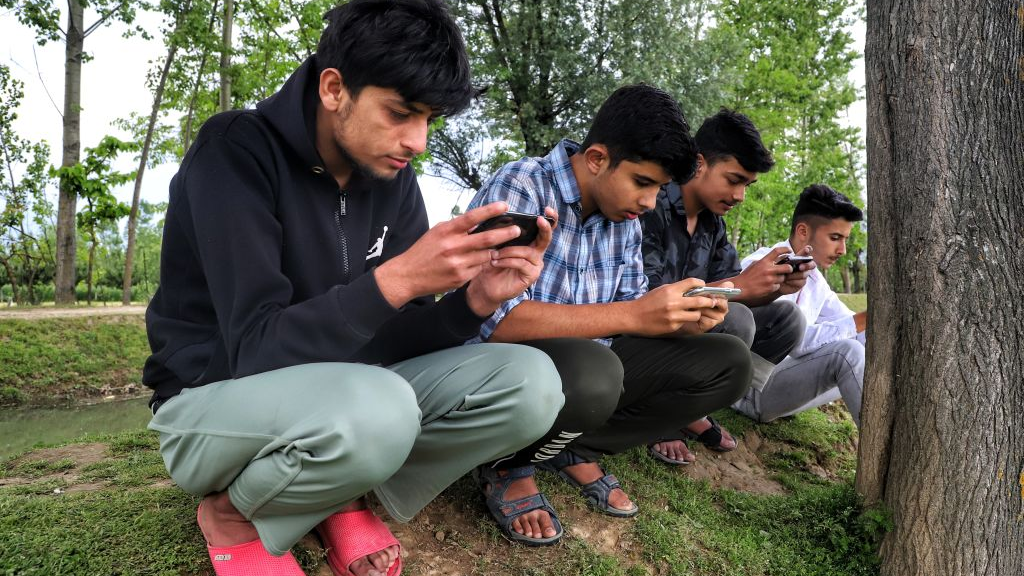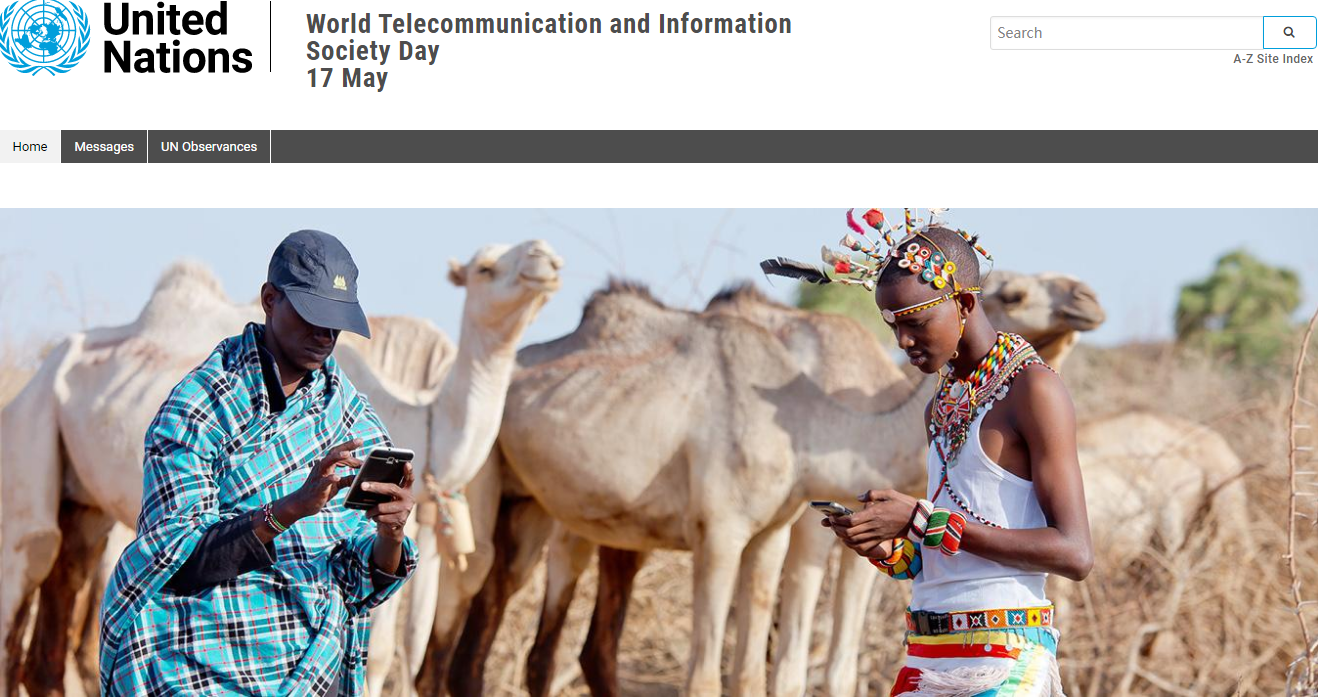
Kashmiri boys play game on their mobile phones as they sit on the banks of a water stream amid COVID-19 in Sopore, District Baramulla, Jammu and Kashmir, India, May 16, 2021. /Getty
Kashmiri boys play game on their mobile phones as they sit on the banks of a water stream amid COVID-19 in Sopore, District Baramulla, Jammu and Kashmir, India, May 16, 2021. /Getty
Editor's note: Stephen Ndegwa is a Nairobi-based communication expert, lecturer-scholar at the United States International University-Africa, author and international affairs columnist. The article reflects the author's opinions, and not necessarily the views of CGTN.
In many ways we are now living in a global village. This reality has dawned on us even more with the tough reality of the COVID-19 pandemic. But the socio-economic dire straits could have worsened were it not for the fact that information and communication technologies (ICTs) helped overcome many challenges of physical distancing and general restriction of movement around the world.
The pandemic has brought people together in uncanny ways after the eventual realization that we share a common destiny. This is cause to rejoice as people mark World Telecommunication and Information Society Day on May 17. Celebrated annually since 1969 to mark the founding of the International Telecommunications Union and the signing of the first International Telegraph Convention in 1865, this year's theme is aptly named "Accelerating digital transformation in challenging times."
Indeed, we are living in tough times. The normal way of living has been distracted. In its place, people have created or improved existing digital innovations to avoid the barriers of time and space. Further, the COVID-19 pandemic has accelerated the acceptance and use of ICTs by late adopters, or those who were simply in denial about their inevitability.
Moreover, ICTs are instrumental in the achievement of all the 17 United Nations Sustainable Development Goals (SDGs). Specifically, SDG Target 9.c states that efficient and affordable ICT infrastructure and services allow countries to participate in the digital economy and to increase their overall economic well-being and competitiveness.
A report published in December 2020 titled "Emergence of COVID-19: Impact on ICT Sector," gives both sides of the scenario. According to the report, some of the technologies that experienced a boon were internet enabled services like video conferencing technology, artificial intelligence, video streaming platforms, team collaboration software, mobile security technology, video on demand and cloud gaming. On the flip side, some ICT markets also experienced hard times due to a slump in both their sales and applications. These include Industry 4.0 (automation and data exchange in manufacturing technologies), wireless sensors, robotic process automation and radar sensors.

Screenshot of World Telecommunication and Information Society Day on the website of the United Nations, May 17, 2021.
Screenshot of World Telecommunication and Information Society Day on the website of the United Nations, May 17, 2021.
To a large part of the world, however, some of these ICTs are still out of reach due to their high cost. Many countries in the developing world can ill afford the state of the art infrastructure necessary in using modern technologies. Where they are unavoidable, the investment is usually very expensive based on a long-term loan.
This perpetuates the uncompetitiveness of struggling economies in the global market, which in turn entrenches the dependency syndrome. There is an ICT divide between rich and poor nations. In what the United Nations calls "The ICT/Poverty Nexus," the body notes that there is "a burgeoning literature on the contribution of ICTs to economic growth, development, and poverty reduction." This school of thought says ICTs are seen as the means through which developing countries can leapfrog over development stages and technology barriers to achieve both economic growth and broad-based development.
The role of government in the development of ICTs cannot be belabored. Government is both a regulator and a massive consumer of digital technologies. In the first case, it is an enabler with the responsibility of ensuring that ICTs are used for human development and not for diabolical purposes. Children are obviously the major demographic that needs protection and guidance in their use of ICTs to protect them from online predators.
Protection of the intellectual property rights of innovators is also critical in motivating those with the genius of solving insurmountable challenges for mankind using digital technology. Importantly, governments should have an ICT tax regime that makes ICTs affordable to the largest number of consumers possible. A good example is the now ubiquitous smart phone, which was initially unaffordable to the majority.
Smartphones have enabled the use of mobile money apps, which have in turn increased financial inclusion among a vast "unbankable" population. Kenya's award-winning M-Pesa digital platform, a mobile phone-based money transfer, payments and micro-financing service launched in 2007, remains one of the world's renowned transformational ICTs. M-Pesa allows millions of users across all socio-economic groups both in Kenya and in the region to deposit, withdraw, transfer money, pay for goods and services, access credit and savings using a mobile device.
The proliferation of social media apps has also fundamentally changed human interaction. Although they have a considerable downside, the apps have made communication instantaneous, helping to accelerate decision making in critical endeavors.
Experts agree that ICTs can support the poor in business development, foster empowerment of the poor, facilitate access to education and health, help improve the environment and prevent natural disasters. Therefore, both international and national players in the ICT sector need to foster initiatives aimed at effectively promoting access to ICTs in developing countries.
The ICT industry should be receptive to the needs of the lower segments of the market and find the perfect cost and utility convergence between software and hardware that responds to the dynamic demands of this segment both at individual and national levels.
(If you want to contribute and have specific expertise, please contact us at opinions@cgtn.com.)

